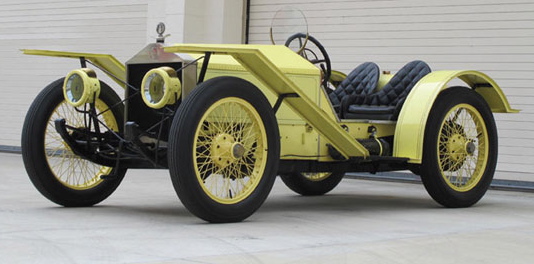
In 1890, Sterling Elliott received a U.S. patent for his Quadricycle, a four-wheeled bicycle that featured yet another of his inventions, a steering knuckle system that allowed the front wheels to turn smoothly because his design enabled the outside wheel to rotate more quickly than the inside wheel as the vehicle negotiated a turn.
Elliott’s invention was the forerunner of rack-and-pinion steering and would have a major impact not only on horse-drawn buggies, which had been using rigid axle systems, but on the automobile that would be coming down the road.
Oh, and those roads would be much smoother because of Elliott as well.
Elliott was born in Michigan but moved to Massachusetts, which in the late 1800s was sort of the Silicon Valley of American manufacturing. He built bicycles and was publisher of Bicycling World magazine. His and other magazines benefited from another of his inventions — a knot-tying machine to make magazine and book binding easier. He also created an addressing machine to ease the distribution of his and other magazines.
While serving as president of the League of American Wheelmen, Elliott lobbied for better road surfaces. He also created a bicycle to make riding easier for women and supported a black racer when the League barred African Americans. That racer, Marshall Taylor, would become a world champion.
To focus on his growing business-machine company, Elliott in 1886 sold his bicycle factory to his friends, the twins Francis and Freeland Stanley, who used Elliott’s quadricycle as the basis for their steam-powered automobile after they sold their photographic plate business to Eastman Kodak.
Elliott had many other inventions, and he assembled a considerable car collection. In 1961, his son, Harmon, a winter-time Florida resident, established the Elliott Museum of Vehicular Innovation to preserve his father’s achievements. The museum was founded in Stuart, Fla., and eventually joined with the local historical society to showcase not only Elliott’s accomplishments but the history of Martin County and its historic Gilbert’s Bar House of Refuge, one of 10 havens for shipwrecked sailors and passengers built by the U.S. Lifesaving Service along Florida’s Atlantic coast.

In 2012, the original museum was replaced by a new $20-million structure that, among other things, features yet another of Elliott’s inventions, a three-story, 55-vehicle robotic car parking structure (see photo above) that allows visitors to select the car they want to examine and — voila! — the car of their choice is delivered right to them.
The museum owns nearly 90 vehicles. Some were donated so the museum could sell them to generate additional funding. Others, which are either duplicates or not part of future exhibition plans also will be sold at Auctions America’s Fort Lauderdale sale. The museum notes it has selected for sale only cars which were purchased by the museum or given without conditions.
The five cars that will cross the block in the Broward County Convention Center are a 1914 Roamer Speedster, a 1922 Fort Model T pickup truck, a 1972 Squire SS 100, a 1955 Ford Thunderbird and a 1968 Chevrolet Corvette convertible.

Inspired by the pre-war Jaguar SS 100, the Squire was made from 1970-75 by Intermeccania of Italy for Auto Sport Importers of Philadelphia. Some 50 vehicles were produced with left-hand steering, fiberglass bodies and Ford six-cylinder powertrains.

The Roamer Speedster was designed by Karl Martin, a custom car builder from New York City, and was produced in Illinois (and later Michigan) with either a six-cylinder Rutenberg engine or a more powerful and more expensive Rochester-Duesenberg four. The museum’s car has the Duesenberg engine.




